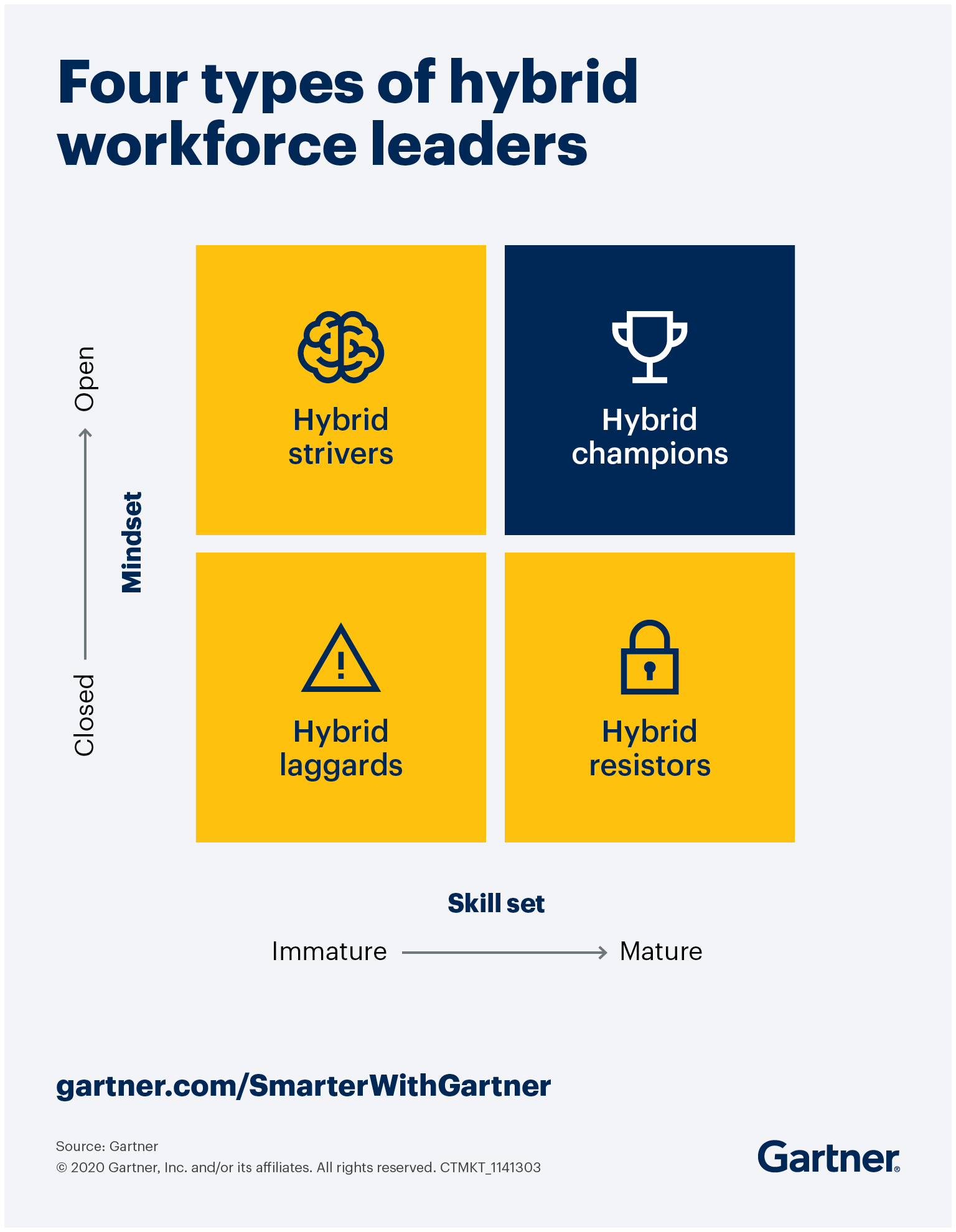The disruption of coronavirus has shattered the paradigm of traditional 9-to-5 work at the office, but the question isn’t just remote vs. on-site. A hybrid workforce model offers the kind of radical flexibility required to build organizational resilience, but does your organization have the leadership mindset and skills to capture the opportunity?
Many business leaders still question the merits of this nontraditional workforce model, but often because of common myths and old ideas about what a hybrid workforce model is, and where, when and how employees perform at their best.
The expectation of radical flexibility is likely to make a hybrid workforce model more prevalent in the post-COVID-19 world
“More employees go above and beyond at work when organizations give them a choice over where, when and how much they work,” says Sasha Tuzel, Director, Advisory, Gartner. “But those benefits can only be captured when leadership is willing and able to reimagine how we work and communicate, without sacrificing the company culture and collaboration.”
Attend webinar: 2021 Gartner Predictions for the Future of Hybrid Work
Dispel 7 Myths to Prepare for a Hybrid Future of Work
Unleash the potential of a hybrid workforce
Download eBookHybrid-ready leaders don’t view a hybrid workforce model as a risk — or insist on preserving tried-and-true ways of working
Mindset and skill set of leaders
Truly hybrid workforce models enable employees to flow through various work sites — from remote solo locations and microsites of small populations to traditional facilities like offices and factories. Work gets done where and when is optimal to drive the highest levels of productivity and engagement. This new paradigm takes a certain kind of leadership.
Hybrid-ready leaders don’t view a hybrid workforce model as a risk — or insist on preserving tried-and-true ways of working. Leaders who perform well in, and drive success from, nontraditional workforce models instead view the move to a hybrid workforce model as an opportunity, and they demonstrate courage, agility, ownership and long-term thinking.
78% of HR leaders identified leaders’ mindsets as a greater challenge than their skill sets in driving the success of a hybrid workforce model
The skill sets required in a hybrid-ready leader include the ability to build trust, empower employees, enable collaboration and establish productive team climates. But in a recent Gartner webinar poll, 78% of HR leaders identified leaders’ mindsets as a greater challenge than their skill sets in driving the success of a hybrid workforce model.
4 types of hybrid workforce leaders, based on maturity
To determine whether your leadership is well-positioned to leverage a hybrid workforce model, you can diagnose the openness of their mindset and the maturity of their skill set on a simple matrix. Segmenting the leadership population in this way enables you to prioritize development where it is needed most.
The four types of hybrid leaders are:
- Hybrid champions: Leaders with the right mindset and skill set to lead a hybrid workforce.
- Hybrid strivers: Leaders who have the right mindset but lack the right skill set to lead a hybrid workforce.
- Hybrid resistors: Leaders who have the right skill set but a closed mindset toward a hybrid workforce.
- Hybrid laggards: Leaders who lack both the right mindset and the requisite skill set for leading a hybrid workforce.
An open mindset is key, but management skill sets are also important
Skill set of hybrid-ready leaders
An open mindset is key, but management skill sets are also important. Hybrid-ready leaders must be able to:
- Drive performance, even when teams are remote, without close monitoring or supervision.
- Champion development to ensure that employees are equipped with the skills needed to drive current and future performance.
- Communicate effectively across a variety of channels to lead virtual and in-office teams.
- Enable enterprise contribution, connecting remote workers with their in-office and otherwise dispersed peers and supporting them all to drive high enterprise performance and contribution.
- Foster inclusive team climates, independent of employees’ choice of work location.
- Build trust and psychological safety so that dispersed workers feel safe to share their challenges for collective problem solving.
- Establish team culture and norms throughout in-office and remote teams.
Many of the skill sets needed in a hybrid-ready leader aren’t new, but they do have to be developed. The expectation of radical flexibility is likely to make a hybrid workforce model more prevalent in the post-COVID-19 world, and the right leaders are critical to operationalizing this emerging workforce model effectively.
![]()



 Subscribe
Subscribe Gartner Login
Gartner Login
